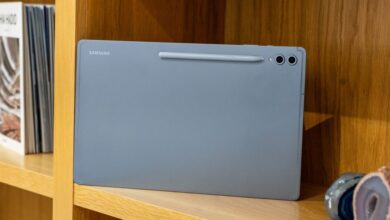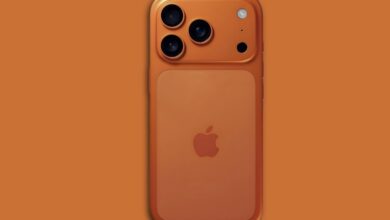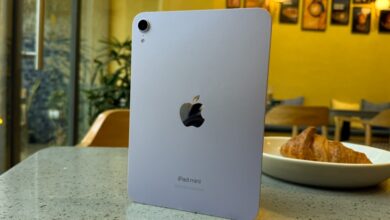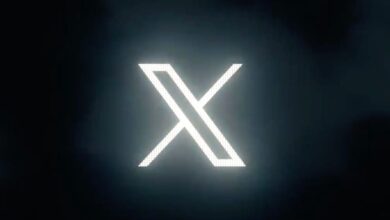Samsung Galaxy Watch 8 review: A stunning blend of style and substance
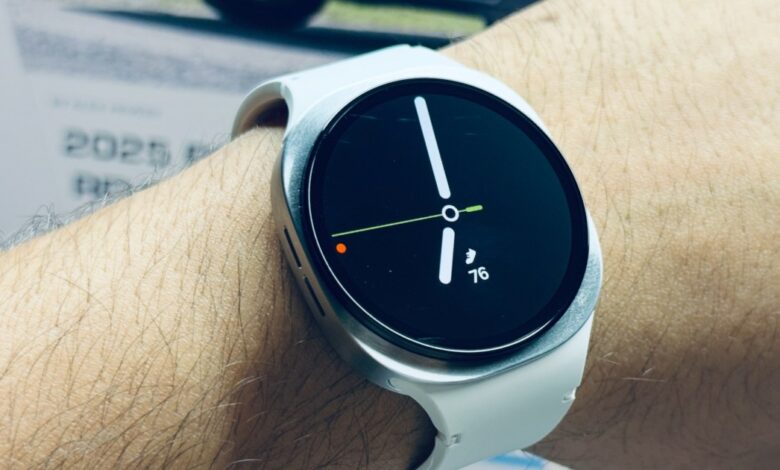
Product Name
MSRP $349.99
“Samsung Galaxy Watch 8 serves a massive generation over generation makeover that is worth absorbing, one wellness perk at a time.”
Pros
Beautiful design with raw metallic lustre
Sharp and bright AMOLED display
Plenty of health and wellness features
Biosensor teaching is accurate and improved
Cons
Battery life could have been better
A few wellness features misfire poorly
The new strap latch system is proprietary
A hefty $50 price hike
Instant Insight
The Galaxy Watch 8 marks a new chapter for Samsung smartwatches, one that introduces a whole new design language while AI takes charge on the software side. There’s a new sensor with a smattering of next-gen health and wellness capabilities in tow. All those niceties crammed into a single package have also, unfortunately, raised the price by a healthy $50 on this generation.
Samsung has made some crucial hardware-level changes that add to the practical appeal this time around. The display is noticeably brighter, the battery is bigger, and the conveniently designed latch system for the strap now helps achieve a better on-wrist fit. It’s an impressive hardware refinement by Samsung, but also one that ends backwards compatibility for straps.
As far as health-centric capabilities go, Samsung is offering arguably the most diverse suite of features, which now includes tailored guidance and a long-term approach to holistic health and wellness. The sensor accuracy has also improved this time around, but a few features are still running into accuracy issues.
I wish the battery life could make a generational leap, but that didn’t happen this year. For its current asking price of $350, the Galaxy Watch 8 is a fantastic piece of smartwatch hardware. If you are a first-time smartwatch adopter or simply getting a great trade-in deal, the latest from Samsung will offer a lovely experience without any major red flags.
Galaxy Watch 8 specs
Samsung Galaxy Watch 8DisplaySapphire Crystal44mm: 1.47-inch (480×480)Super AMOLED, Full Color Always On Display40mm: 1.34-inch (438×438)Super AMOLED, Full Color Always On DisplayDesign, Dimensions, and Durability44mm: Graphite, Silver40mm: Graphite, Silver44mm: 43.7mm x 46mm x 8.6t (34.0g)40mm: 40.4mm x 42.7mm x 8.6t (30.0g)
5ATM + IP68 / MIL-STD-810H
Health featuresFDA-Certified ECGBlood pressure monitorAntioxidant level checkBioActive Health SensorAdvanced Glycation End-products (AGE)ProcessorExynos W1000 (5 Core, 3nm)Memory2GB RAM / 32GB storageBattery44mm: 435mAh40mm: 325mAhSensorsSamsung BioActive Sensor (Optical Bio-signal Sensor + Electrical Heart Signal + Bioelectrical Impedance Analysis), Temperature Sensor, Accelerometer, Barometer, Gyro Sensor, Geomagnetic Sensor, Light SensorPrice$349.99 (40mm), $379.99 (44mm)
Galaxy Watch 8 design is a sleek evolution
Quick Take: A refreshingly minimalist design makeover with an improved strap lock approach.
Almost every single person in my circle has praised the Galaxy Watch 8’s fresh new design, which is a blend of raw polished metal appeal and a clean-glass display module over it. Samsung offers the smartwatch in 40mm and 44mm sizes, but for my dainty wrists, the 40mm trim worked its charm.
So far, Samsung has remained loyal to the cause of decidedly round watch dials, just like every other brand chasing Wear OS smartwatch glory. This year, the Korean company is borrowing the charm of square watches (ahem… Apple Watch… ahem) and has beautifully managed to cram a round display over the squircle Armor Aluminum base.
The result is a design unlike any I’ve seen so far. It’s sharp, more minimalist, and the focus on a brushed metallic look gives it a more gentlemanly appeal. Unlike its predecessor, I had no qualms pairing it with a shirt or denim jacket. I just wish I could replace the white silicon strap with a suede leather strap to get my dream on-wrist look.
Talking about the strap, the Galaxy Watch 8 also embraces a new Dynamic Lug system. I prefer the new mechanism. Unlike an Apple Watch and its sliding strap lock system, you just have to press a metallic button, and the strap opens with a springy feedback. It also goes back in with a simple push and a satisfying click that securely locks it in place.
The new lug system means third-party accessory makers will need some time to adapt and offer their products. More importantly, the straps of your older Samsung smartwatch won’t fit on this one. On the positive side, the new strap lock design gives it a more pronounced arch at the point of attachment compared to its Apple rival.
The result is a more snug feel on your wrist, and I quite liked it during my morning runs. It tips the scales at 30 grams, the same as the Apple Watch Series 10, but given its wider on-wrist presence, the Galaxy Watch 8 feels deceptively light. As far as the color options go, you can pick between grey and silver. But I’d recommend the silver shade as it pairs well with bands of all colors and materials.
Samsung Galaxy 8 display & performance impress thoroughly
Quick Take: The brighter display stands out, and the software has its charms.
Samsung has only ever slightly increased the display size on the Galaxy Watch 8 and added a few extra pixels. On the 40mm version I tested, you are greeted by a 1.34-inch display with resolution figures of 438 x 438 pixels. It’s a Super AMOLED panel, which promises stunning blacks, bright colors, and great viewing angles.
All those benefits reflect just fine on the Galaxy Watch 8. The big upgrade this time around is a boost in the brightness levels by a hefty 50% margin. The screen can now go all the way up to 3,000 nits, matching the brightness output of the best smartphones out there.
Irrespective of whether I was indoors, walking in the subway, or taking a jog in the park, the panel never bothered me. Even under direct sunlight, I didn’t run into legibility problems. I only have two minor woes to report about the panel. First, it has a reflection or glare issue, especially indoors when you’re operating it at low brightness levels.
Second, now that the round display sits exposed above the metallic base, it is slightly more exposed, leaving it more vulnerable to bumps and scratches. Samsung assures that the sapphire crystal layer will do a fine job at protecting the screen, but I’d still advise some caution while wearing it.
Talking about durability, the build is IP68-cleared, which means it can handle sweaty workouts and the occasional dip in a bucket. Samsung is also touting MIL-STD 810H endurance (survive temperature extremes between -20 degrees and 50 degrees Celsius) and 5 ATM resistance for liquid exposure, which means it can handle brief immersion in shallow water. Just don’t take it close to fast water jets, will ya?
As far as performance goes, the Galaxy Watch 8 is snappy. Yes, it’s the same Exynos W1000 processor as the Galaxy Watch 7, with an identical 2GB of RAM and 32GB storage capacity. But Samsung has done a terrific job optimizing its in-house silicon to offer a smooth experience while running the Wear OS 6 software.
While testing the smartwatch, I never ran into a scenario where an app crashed abruptly, nor did I run into any lag while switching between them. One UI 8 Watch running atop Wear OS 6 doesn’t change the look and feel of Samsung’s signature smartwatch UI, but it brings a bunch of new functional tools, such as multi-function tiles and the Now Bar system borrowed from Samsung phones.
A left swipe on the Home Screen pulls the alerts and notifications, while swiping right gives access to the fitness tiles and activities. A downward swipe opens the control centre, while the reverse pulls up the app drawer. The whole experience now actually feels closer to an Android phone than ever, and it’s a crucial victory for first-time as well as seasoned smartwatch users. Moroever, thanks to the custom hand gestures, it’s possible to operate the Galaxy Watch 8 without even touching the screen.
Samsung Galaxy Watch 8 gestures are a hidden gem
Quick Take: A smartwatch should focus on convenience and dexterity. The gesture controls offer just that.
Unlike the Classic variant, the vanilla Galaxy Watch 8 trim doesn’t come with a physical rotating bezel. What you get on this one are capacitive bezels that you can trace your finger in circular motion for navigating across the App Library, moving up and down within app pages, scrolling past Home Screen tiles, and notifications. It’s cool, but it’s a tad finicky and took me a few days to find my groove with it. I stuck with touch-based inputs for the most part, and treated the bezel navigation more like a novelty or show-off.
My favorite feature on the Galaxy Watch 8 is the focus on gestures. One of the most irritating aspects of a smartwatch is that you need two hands to operate it, even for the most basic tasks like checking a message notification, handling calls, media playback, and more. It gets burdensome when you’re lying in chill mode on a comfy sofa, have people around you on a crowded bus, or just sleeping by your partner’s side and struggling to shut down the alarm.
On the Galaxy Watch 8, you get broadly three gestures viz. double-pinch, shake, and knock. The best part is that these gestures are context-aware, which means they act depending on the UI page you’re currently engaging with. On the Home Screen, this gesture opens the Now Bar for notification access, while a secondary double-pinch will let you move to the next notification or open the preset tile.
The same gesture controls music playback (play, pause, next), handles alerts (alarm, calendar, and reminders), and takes care of calls. Rotating the wrist twice executes the shake gesture, which has some overlap with the aforementioned activities, but it also acts as a back gesture and can erase text while typing. The knock gesture, which is essentially bending the wrist up and down, can launch apps, open exercises, enable torch, and do more.
For added flexibility, the Universal Gesture dashboard offers gestures that will let you control the Galaxy Watch 8’s entire user interface. Here, you can assign core controls such as select, next, and previous to single-pinch and fist gestures. There is, definitely, a learning curve involved, but I got used to these gestures within a couple of days. Moreover, they are fairly reliable, so you won’t exactly find yourself making a fist or double-pinching in vain.
Samsung Galaxy Watch 8 features are meaningful and plenty
Quick Take: This watch covers all the basics you desire, and then throws a few extra tricks into the mix.
Samsung Galaxy Watch 8 offers an astoundingly deep set of health and wellness features that even outshine what Apple and Google have to offer. At the heart of these wellness chops is the next-gen biosensor that can now collect more heart activity metrics than just heart rate, blood pressure, oxygen saturation, and ECG readings.
The new additions this year are Bedtime Guidance, Vascular Load, Running Coach, and Antioxidant Index. Samsung’s smartwatch can now detect ectopic beats by tapping into the ECG data, and help users identify heart activity patterns that usually go undetected and can worsen over time, leading to heart failure and stroke incidents. Additionally, the PPG sensor also keeps an eye on the blood flow pattern during sleep and the stress on the blood vessel walls.
These metrics help create vascular load data, which is a direct reflection of the food, rest, and stress patterns of your body. Bedtime guidance performs a three-day scientific analysis of how badly your body needs sleep and how your internal body clock is tuned for some shut-eye time. Based on these biological patterns, the onboard sleep assistant offers appropriate sleep advice.
And yeah, it repeatedly told me that I needed to sleep longer and shut my eyes a few hours earlier. It wasn’t unexpected, since I work across different time zones and sleeping in regular hours is next to impossible for me. I was somewhat bittersweet to see the Galaxy Watch 8 reiterating those challenges.
Talking about sleep, the Galaxy Watch 8 also comes with support for sleep apnea detection. It’s a serious sleep disorder in which breathing is disrupted due to a restriction of airflow into the lungs. The smartwatch looks for signs of it by analyzing the blood oxygen levels during sleep, and can further couple it by detecting instances of snoring (which is a known signal of obstructive sleep apnea).
Finally, we have a new feature called Antioxidant Index. As you press your finger on the watch’s biosensor, it shines light through it and analyzes skin pigments known as carotenoids. Their presence in the skin is a sign that you are getting enough antioxidants by consuming vegetables and fruits (the green and orange variety, specifically), and their intake is important for healthy skin and aging.
It’s a great feature to have, but I don’t think it’s particularly accurate. Or maybe it works best when you’ve been on a streak of eating fruits and vegetables that boost antioxidants in your body. Before taking the latest measurement, I had eaten two pears, one Apple, a whole bowl of oats with a variety of vegetables, and pineapple juice over three consecutive meals.
Another misfiring element was the stress measurement system. I tested it with half a dozen people who were in a good mood, smiling and grooving to music, but the watch catalogued them in a high stress level category. A friend of mine looked visibly stressed (and I know it personally following his nasty breakup), took the feature for a spin, and the Galaxy Watch 8 profiled him at a moderate stress level.
Moving ahead of the hiccups, you can track your food intake in terms of calories, and also keep an eye on the new Advanced Glycation End-Products (AGE) index to maintain a dietary metabolism that can help control inflammation and related diseases. As someone who pops nearly half a dozen pills and capsules for health reasons, I love the medication plan scheduler and the ability to add details by just scanning the bottle stickers.
I also like the new running coach feature. As the name suggests, it analyzes your running routine for 12 minutes, rates your current level, and then helps create a fairly doable training regimen. It put me at level 3 (on a scale of 10) after my 5K run, which was somewhat embarrassing for me, but also gave me a new level target in terms of speed and distance metrics.
Before making a plan, it takes into account personal details such as height, weight, and experience, which is a good start. Additionally, the AI assistant offers mid-run guidance and details on the progress. Personally, this is the most exciting feature, and I am hoping to push it as I get back my running groove.
If you are a fitness enthusiast, the watch offers support for over 100 activities, from indoor cycling to swimming and weight machine workouts. For those who prefer a more zen approach to wellness, the Galaxy Watch 8 can also take you on a guided meditation and breathing exercise tour.
Samsung Galaxy Watch 8 activity tracking makes a crucial leap
Quick Take: Samsung has outdone itself at biosensing accuracy, but falls a hair short of Apple.
During my most recent workout session lasting 25 minutes on an elliptical bike, I measured the heart rate using the Galaxy Watch 8 and the chest-strapped Garmin HRM 10-Dual heart rate sensor. The Samsung smartwatch proved to be surprisingly accurate, and nearly overlapped with the Garmin heart rate monitor for the entire duration. There were slight momentary deviations, though, but only a couple, so it’s nothing to worry about. In general, the Galaxy Watch 8 tends to falter more at recording the drop in heart rate compared to the spikes.
In the early phase of the workout, the Galaxy Watch 8 missed a dip in the heart rate when I took a brief break to adjust the resistance. The two wearables were otherwise neck and neck, and the Galaxy Watch 8 only overestimated the peak heart rate with a deviation of 1 or 2 percent, at worst. Based on the data I gleaned from the Apple Watch Series 8 for comparison, the Apple smartwatch was statistically close to the chest-based Garmin wearable, but the variance was pretty small.
The accuracy was better at outdoor cycling, compared to the sessions on an elliptical bike, and much better compared to weight exercises using dumbbells. While cycling outdoors on a route that takes me 30 minutes each way, the deviations in heart rate readings were smaller compared to what I got while working out on a bike indoors. The Apple Watch Series 8 again fared better, but not by a significant margin.
There are a few differences, though. The Galaxy Watch 8 consistently put the heart rate readings in a zone higher than what the Apple Watch reflected on the screen. Though both smartwatches were roughly in the same bracket in assessing the peak heart rate and average heart rate during the workout, there was roughly 10-15% variation on average for intense workouts. Compared to my experience with the Galaxy Watch 6, the Galaxy Watch 8 offers a notable improvement in all areas.
As far as sleep tracking goes, I couldn’t source an EEG headband in time to compare the sleep data. But compared to the Apple Watch Series 8, the Galaxy Watch 8’s sleep tracking was more or less in the same bracket. The only variance that I recorded was in the number of minutes logged by the Apple smartwatch in REM sleep stage (1 hour and 20 minutes) compared to the Samsung device (1 hour and 35 minutes) on my most recent shut-eye adventure.
Samsung Galaxy Watch 8 battery life is acceptable, but not the best
Quick Take: In full throttle, the Galaxy Watch 8 can last a full day, which isn’t the competition’s best, but the slow charging tests your patience.
Samsung has fitted a 325mAh battery on the Galaxy Watch 8, which is 27% bigger than the one fitted inside its predecessor. I worked out for an hour each day, while the watch was connected to my phone all day long with synced notifications, and always-on display mode was enabled. The brightness levels, on the other hand, were set to auto-adjustment mode.
With that kind of usage, the Samsung smartwatch gave me an average mileage of 27-30 hours per charge. It’s not terrible, but certainly not the best in the segment. Samsung has leapfrogged the battery endurance figures I get from my Apple Watch, but it still hasn’t managed to beat OnePlus’ latest smartwatch, and also those running a customized RTOS software.
During the course of the testing, I never enabled power-saving modes, however. The biggest nuisance is the slow charging speed. The magnetic puck that comes supplied in the retail package is pretty slow, and it takes the watch roughly two hours on the clock to fully juice up an empty tank.
Should you buy the Galaxy Watch 8?
The latest from Samsung is also, pound for pound, its best smartwatch yet. It has a design that falls far from the nerdy appeal of smartwatches, but there’s more to it than meets the eye. It’s lighter, offers a better on-wrist fit, and serves a brighter display.
The software experience, now supercharged by AI, is loaded with tons of innovative features that not only cover workout training, but also take a proactive approach at fixing your inner metabolism, sleep, and even improve the current exercise regimens with personalized guidance.
I wish Samsung had gone the extra mile with battery life and sped up the charging pace, but the Galaxy Watch 8 still races ahead of Apple on this crucial metric. If you’re an iPhone user, there’s simply nothing for you here. Overall, for its $350 asking price, it’s a worthy package. And if you can score a trade-in deal, it’s an even sweeter pick.
Why not try…?
The two biggest competitors of the Galaxy Watch 8 are the Google Pixel Watch 3 and the OnePlus Watch 3. If you want the best Wear OS experience with quick update cadence, minimalist looks, reliable performance, and advanced health features, the Google device is a great choice. I would, however, recommend waiting a few weeks as the Pixel Watch 4 is right around the corner.
On the other hand, if battery life is your top priority and you don’t mind a slightly bulky build, the OnePlus Watch 3 should serve you just fine. Moreover, it will also save you some money while at it. Additionally, you can look at the Galaxy Watch 6, as well, if it’s available at a discount. It covers all the basics and will soon get some of the Wear OS 6 goodies that are currently shining on its successor.
How we tested
I purchased a 40mm version of the Galaxy Watch 8 for this review and paired it with a Samsung Galaxy Z Fold 7. I used it for a spell of two weeks, pushing it during my morning workouts that included a mix of running, cycling, at-home elliptical exercises, stretching, and strength exercises. Over the course of testing, the watch went through ten charging cycles, both complete and partial.
I also wore it for over a week consistently to check the sleep accuracy and generate the map for sleep guidance. Notifications were routed through a Samsung phone, the always-on display mode was always enabled, and gesture controls were active, as well. The smartwatch was connected to the phone at all times during an average day, and no third-party accessories were used for charging it.


